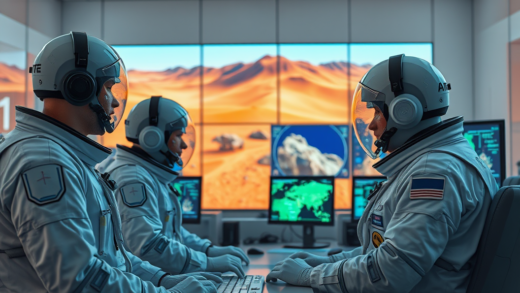The technology of AI modifications for images has grown tremendously, influencing not only photography but also the moral aspects of image consumption. With the development of tools such as Nudify AI that allows for immense image editing, societies are forced to think about the repercussions of such tools. On the pro side, such advancements encourage more out of the box approaches from artists and designers, giving them more to work with. However, problems of consent, privacy, and abuse of such tools arise too. This contradiction is the center of the moral controversy of AI image modifications which calls for deep attention. The understanding of features and consequences of these technologies is fundamental for problem solving in this multifaceted area.
Understanding AI Technology in Image Modification

The image modification technology powered by AI is complex and interesting at the same time. It essentially relies on the use of advanced software programs that breakdown images using an approach called deep learning. These systems learn from huge amounts of data so that they can recognize patterns and then make choices pertaining to those patterns. The AI’s capability within this domain is quite astonishing, giving it the ability to achieve edits that would take several hours of carving work to achieve all in a second. Nonetheless, the truth behind machine learning will always be ethically troublesome: How are these datasets shaped, and what sort of prejudice do they posses? When studying the mechanics of AI modification of images, one feels that innovation is occurring at lightning speed, but so too the level of morality is harrowing.
It is crucial to understand how these systems learn from data before pondering the power AI holds in modifying images. The entire process starts with the gathering of large sets of images which may reach thousands or even millions of pictures. While these sets are often anonymous, there are still chances that some personally identifiable images or images without consent could be present. The AI uses neural networks to process the images by identifying characteristics and extracting features which aids decision-making processes. The consequences of these learning patterns are quite significant. What this means is how a modification is made will heavily depend on how the AI understands images. This makes the consideration of ethically sourced deviations data very important.
| Aspect | Consideration | Ethical Implications |
|---|---|---|
| Data Sourcing | Quality and Relevance | Potential Bias |
| Consent | Explicit vs. Implicit | Violation of Privacy |
| Purpose | Creative vs. Malicious | Impact on Society |
Ethical Implications of AI-Powered Undressing

The aspect that is argued the most with the AI-powered undressing category is consent. The ramifications of altering a person’s image without their permission can be very damaging. This not only infringes on privacy, but also promotes a culture of abuse and dehumanization. The use of Nudify AI and similar apps seem to blur the lines of what is deemed inappropriate. Moreover, the possibility for abuse in the form of revenge porn or other means of harassment raises these issues further. Understanding that great power comes great responsibility, is something that holds true in the case of AI image cropping and modification.
When it comes to moral behavior, consent forms an ethical mid-region and becomes noteworthy in regards to the use of technologies that deal with image manipulation. The idea of consent can be intricate, for it goes beyond the bare bones acceptance to a more sophisticated comprehension of what is entailed in sharing one’s image. People ought to possess an informed option regarding how their image is taken, stored, and modified. Where no consent is given, the danger goes beyond the violation of personal dignity and can affect one’s mental wellbeing and social attitudes. Explicit guidelines should be set that stress the importance of getting consent in advance of using images of people in any form of alteration. This principle can assist in achieving accountability and respect in relation to one’s activities in the digital environment, so these guidelines can foster a culture of responsibility and digital respect.
Societal Impact of AI Image Modification
AI-assisted image altering goes hand-in-hand with privacy issues, but the societal implications are much deeper. The adoption of AI dynamic tools shapes public opinion of beauty and body image immensely. One of the most alarming problems is the adoption of unrealistic beauty ideals which can have far-reaching consequences on mental well-being. There is substantial evidence to support the idea of correlation between mediated images with various forms of body dissatisfaction; rest assured, among the young this phenomenon is significant. Such societal pressures can make it difficult for people to accept and love themselves, which leads to low self-esteem and body dysmorphic disorder. When dealing with these technologies, we need to pay attention to the impact they have on mentalities and the concept of beauty.
As AI’s accuracy for altering images increases, so does the technology’s ability to alter beauty standards. The images created utilizing these tools may serve as an unrealistic standard that can result in comparison and self-doubt amongst viewers. Such impacts are more pronounced for at-risk populations, especially younger people, who are more vulnerable to societal influences. Also, the wide use of digitally edited images may lead to a society where the acceptance of different forms of bodies is harder and harder to achieve. It is crucial for society to start examining the effects of these technologies with a more critical eye, as it poses grave dangers that require a call to action for more diversity within media. Prioritizing non-idealized characteristics may reduce the negative impact AI modifications have on personal views of one’s body.
Legal Perspectives on AI Image Modification
The nuances regarding laws related to modifying pictures via AI technology are delicate and are still unfolding. There are existing laws relating to privacy and even some relating to intellectual property, however, most of them do not consider AI’s nuances. As an example, a case of an image modification made without the permission of the individual subject’s name to images captures the essence of AI’s uncontrolled nature. Moreover, technology grows faster than the pace at which lawmakers can create regulations. Uniting these disparate pieces, stakeholders are required to implement specific laws dealing with AI image modification. These steps are important for protecting the boundaries of dignity and human rights in light of newly emerging technologies.
The faster society adapts to AI technologies, the more pressing the need for regulatory compliance becomes. The laws in place currently do not cater breaches and violations of ethics AI changes. Basically, something needs to be done to improve the legal aspects surrounding the usage of these tools and this spans from disclosing where the information is obtained, defining how consent is given to set penalties for contraventions. In addition, promoting a collaborative approach towards these regulations can ease the way for broader coordination of the issues. Society benefits from strong regulations because the risks and ethical misconducts associated with digital activities will be minimized.
Conclusion
The AI-driven nudification and image modification practices raise ethical issues which must be addressed. As the technology advances, so too must the discussion around consent, privacy, and social impact. There is a need for all parties including developers, consumers, and law makers to reflect on these matters cautiously. Without constructive engagement and proper ethical frameworks, we will easily fall prey to the dangers posed by AI image editing. This will enable us to use such technologies for creative and innovative purposes, while protecting the dignity and rights of individuals. In the end, the need to maintain a culture of responsibility and respect as we transition into the AI era should be our primary concern.
Frequently Asked Questions
- What is AI-powered undressing? AI-powered undressing refers to the use of artificial intelligence to digitally remove clothing from images, often without consent.
- Are there legal protections against non-consensual image modification? Legal protections vary by jurisdiction, but many places lack specific regulations addressing non-consensual image alterations.
- How does AI impact societal standards of beauty? AI image modification can perpetuate unrealistic beauty standards, affecting body image and self-esteem in individuals, particularly among vulnerable groups.
- What can be done to ensure ethical use of AI in image modification? Promoting a culture of consent, enhancing legal frameworks, and fostering awareness about the implications of such technologies are crucial for ethical usage.
- Is all AI image modification unethical? Not necessarily; while there are significant ethical concerns, some applications of AI image modification can have positive, creative, or educational purposes when used responsibly.


